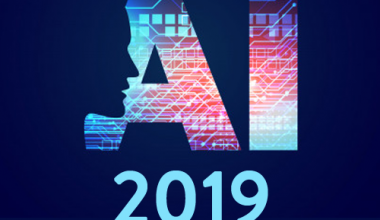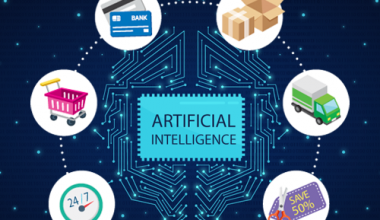
The world has witnessed a rapid shift in technological elevation with the commencement of AI. AI helps in determining policy responses for educational policymakers in developing countries.
Abundant data can be easily tracked, quantified, modeled, and sometimes predicted with the assistance of AI to ease the task of people. Leveraging AI to education and learning by ensuring equitable use and safeguarding education data to monitor students.
The impact that AI has created in the education field is innumerable. It is not a mere fact of technology to just facilitate assistance across domains but a seaming revelation in today’s technological advancements.
AI is termed to be boundless in performing activities that require a higher level of intelligence. It suffices to say that AI can cater to the broader vision of the knowledge spectrum with a precise performance which is very vital in education.
It is the nature of interdependency that offers engagement and energizes the students periodically where the conventional method lacks. Technology is moving at a faster pace and so are innovations. AI has the potential of accelerating the student’s creation of innovative technologies.
Some countries still toiling hard without the proper acquisition of technology. AI enables empowerment in the field of education thus shaping the growth of the country in various aspects. It also helps in amplifying the literacy rate of a country and the reason in which AI stands tall may be the interaction it has got with the people.
Growth of AI in global education
China has begun to extend its lead in AI globally by delivering strong results and concentrating on a core set of practices that adopt AI for unique use cases. India’s central educational board has decided to impart education with the aid of AI. The primary focus lies in grooming the students to adapt to the fast-growing and challenging technologies.
Canada poses a greater interest in investing a huge sum in AI for fostering education and it was the first country in the world to announce a national strategy for artificial intelligence. It is a predominantly focused investment in nurturing advanced research and innovations in AI. Developing a high talent pool examines the deep understanding of AI’s societal implications.
It is expected that artificial intelligence in the USA looms large by 47.5% from 2017-2021 according to the artificial intelligence market in the USA education sector. Although the path may be full of troublesome and tiresome, world pioneers have promised to take the national education system quite comparable to the global level.
Focus on individualized learning
AI can pave the way for assessing individuals and delivering the information based on a student which has always been a daunting task for a teacher. There are several companies in the world currently developing an intelligent set of instruction and design patterns that typically use AI to provide learning, testing, and providing constant feedback based on performance.
In the near future, AI may be progressively developed to gauge the expression of individual student faces and modify the level of difficulty in the subject matter. The primary objective of AI is to fill the void in the education that already exists and pose challenges for different sets of students from school to college level.
Ease the grading challenges
Most teachers find difficulties in the phase of grading and evaluating students’ performance. AI can be employed in grading individuals with an acute level of results which gives a finite amount of time for teachers to engage with the students.
It is now possible for teachers to automate the results of true (or) false and multiple choice questions with utter ease. There is no room for malicious intent because it allows the students to understand their level of expertise and shrewdness. This is very crucial in motivating students for a greater performance throughout the entire course
Smart content
The technology works in shortening the textbook content into a fascinating subject matter. The astonishing user interface has been employed to help students of all ages and which is made possible by digitizing the textbook.
It also includes virtual content like video conferencing and video tutorials. For instance, cram101 uses AI to scrutinize textbook content into an easily digestible guide that includes summaries, flashcards, and multiple-choice.
Netex learning allows users to design digital content across platforms and integrate rich media like audio and video as well as self-published content. Indulge the users to master their armory of skills through continuous feedback.
Streamlining the administrative tasks
This may seem repulsive or redundant at times but can be automated by AI. Various works such as grading, assessing homework, and responding to the students. AI can step in and make tasks at a faster pace while at the same time offering a recommendation for filling the gaps in education.
There is much potential for AI to create a more efficient enrollment and admissions process. Developers are also finding a way of evaluating written responses and normal essays. Managing a large set of student databases may be a herculean task for staff and also there is a huge possibility for errors.
Also Read:
Impact of Mobile App Technology in Education Industry
Risk factors involved
The main challenge involves comprehending new policy that leads to sustainable development in AI. The gripping complexity of technology needs to orient with the multiple factors and people to further development. Ensuring equity and inclusion is not that simple for developing countries where they are yet to overcome certain hurdles in the basic infrastructure.
Teachers and AI learners must align themselves in a meaningful way to attain a solution. Teachers should be in a position to inculcate new digital skills whereas AI developers should possess an eye for developing a technology based on evaluating teachers’ performance.
Developing AI in data-centric is essential onboard for heading towards a leader in the educational process. Maintaining data with liability and transparency may seem quite laborious but is quintessential for managing AI in an ethical fashion.
Conclusion
AI has entirely transformed the method of fostering the realm of education. Overpass the fear of humans getting replaced by AI in the coming decade and instead think of developing inherent relations with intelligence to manage different competencies.
Embracing AI will give educators a phenomenal opportunity to redefine their roles and uncompromising education. Baring certain aspects, AI is still an alarming tool in a budding technological era.
About Fusion Informatics
We are conscious of the significance of AI and its dynamic capability for the advancement of the future. Fusion Informatics holds a team of experts striving upright for the challenges in technology.
We take extreme concern about the client’s needs throughout the development process. We are leading destinations for varied industries in curating AI that will serve the company in the distant future. We are highly motivated and dedicated to the necessity of satisfying clients through our solutions.






